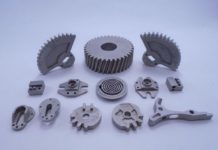 Nunzio D’Addea –
Nunzio D’Addea –
Technology, which selects the activities and the course that allow the production and the economic exercise of goods, sometimes seems to neglect some issues, since nowadays mature and then economically inappropriate; then, suddenly, also due to innovating specific investments, the interest emerges again and the profits restart growing: we rediscover application sectors, even if not completely new, but previously deemed marginal and of scarce interest.
Hydraulics, which in distant years reaped several outstanding service successes, to the extent of almost impressing the world and the time of the factory automation, of the mobility, of the regulation of energy generation processes and many others, for several years now, in various sectors, it has been suffering the aggression and the winning erosion of the electrical technique.
A certain language sharing, with a simpler information exchange among processors, signal generators, actuators and transducers, has favoured the project, facilitated the operation, made the forecast reliability safer and the maintenance and repair intervention of machines and systems more comfortable; besides, it has favoured transition processes from one technique to the other that are sometimes impetuous.
In this world rich in different solutions, often very sophisticated, it seemed then that hydraulics was intended for occupying control and servo-control niches of rigid automation stations, of sequence, perhaps only in case of high forces: actually, this was and still is the recurring sensation over the last few years.
Suddenly, however, here are some applications that arouse utmost interest and great marvel.
There are frontier sectors, maybe limited, like the constructions of big civil works, mobility and especially aerospace: an unequivocal sign of evolution and growth, of both scientific and technical-applicative knowledge.
Active and passive damping platforms, on the wake of regulated anticipatory systems, appear to protect important sites and under constraint of maximum dangerousness but also of bridges and big constructions in areas of high seismic risk.
A generation of complex machines of philosophy and sensors recopies in lab motion stresses and laws, simulating the man-machine and man-environment relationships under extreme operation conditions, both on earth and on aircrafts: evolved machine, to the extent of recognizing, dialoguing and operating according to the reference environment rules.
Those who succeed in overcoming the unavoidable severity in the safety of laboratories and plants of a space body can also make the discovery of a reasoned use of hydraulics in equipment for training, handling and instrumental prearrangement of carrier rocket launch, wherever the physical-chemical characteristics of the work fluid are inseparably linked with components and components themselves are forced to functional limits with anticipatory and knowledge techniques and controls specialized in their own static and dynamic characteristics.
Perhaps the future of hydraulics, of its new diffusion and development will proceed from these applications, today still limited but able to envisage expertise and use innovations.



